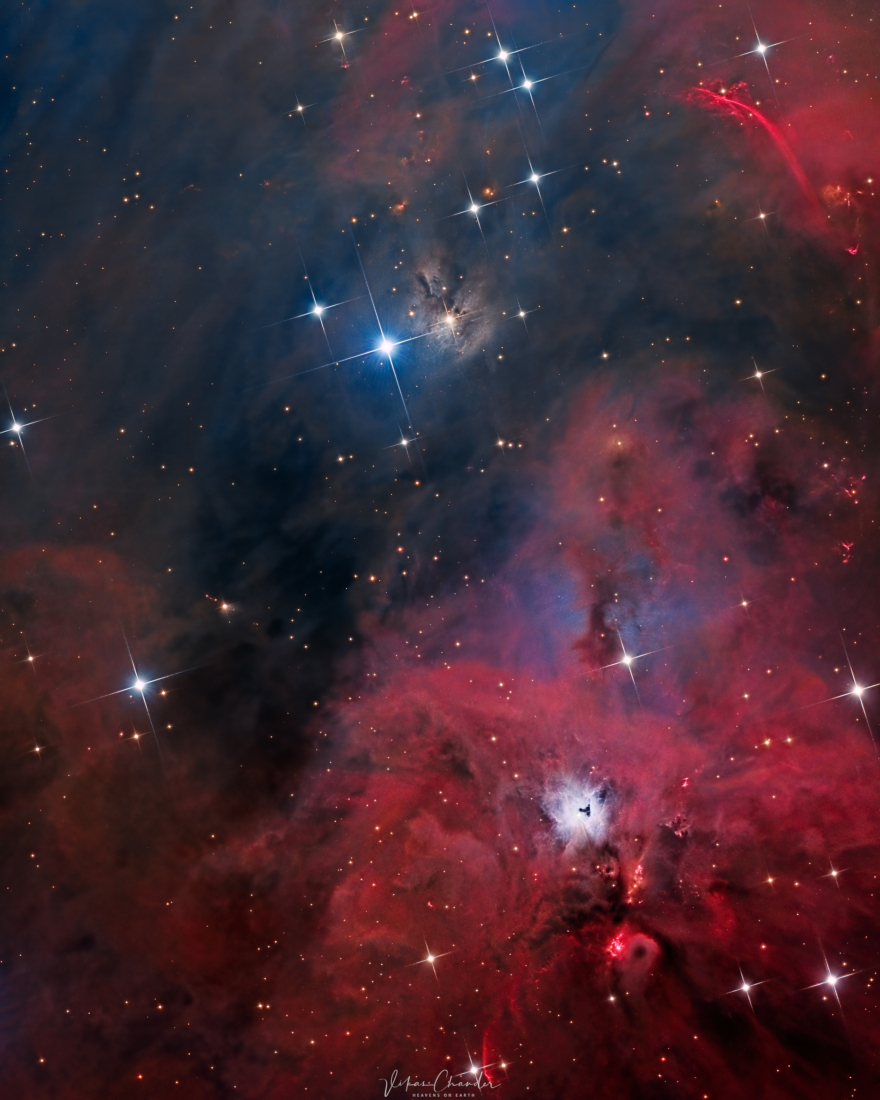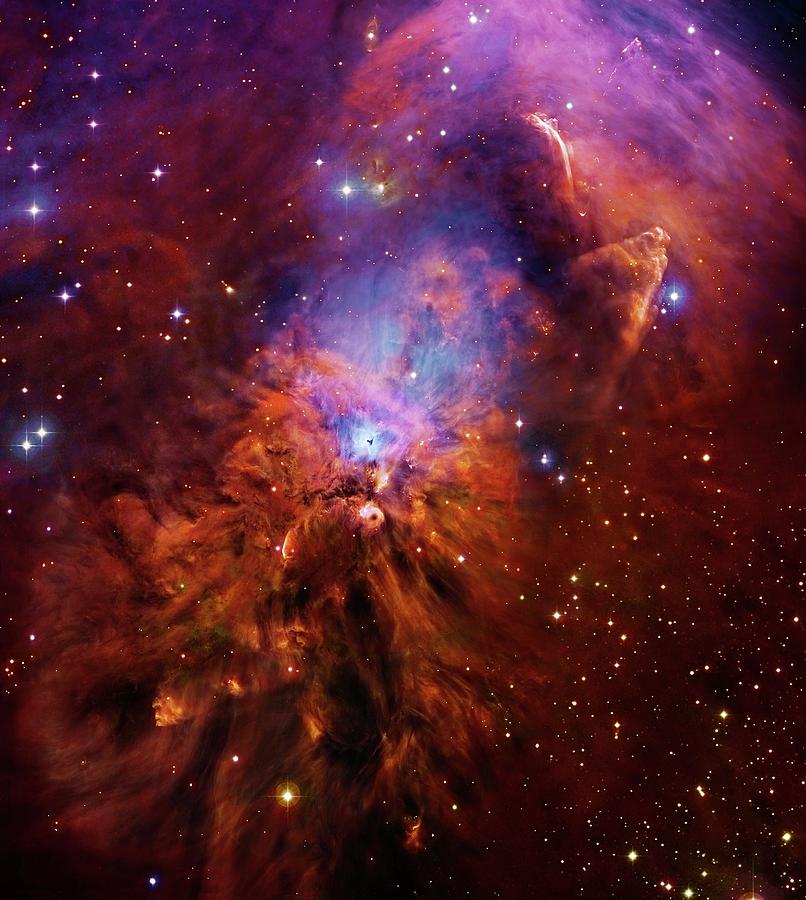Today's APOD is stunningly beautiful! Of course, the entire NGC 1999 is most fascinating, and Vikas Chanders' portrait is superb! Even so, I can't help comparing it with a picture of (more or less) the same area by Robert Gendler:
Note near the lower right corner in the APOD a red circle with a dark hole inside. The same formation is near the center in Robert Gendler, just below NGC 1999, and to me this circle almost looks like a tiny
caldera of a tall volcano, where lava is streaming down all around its sides. NGC 1999, just above this circular structure, appears in Gendler's image to be blowing out jet streams of gasses. You can also see the Waterfall Nebula near the top right corner in Gendler's image as well as in Chander's. To the lower right of the Waterfall Nebula in Gendler's image is a strange triangular formation.
Let's look at some details in Chander's picture:
Vikas Chander's image shows us many Herbig-Haro objects in bright red. These are tiny jets and outflows - well,
comparatively tiny! - from young stars that are still accreting matter. The red color is hydrogen alpha caused by shock waves as the jets hit the surrounding medium and ionize small patches of hydrogen as a result.
I really like Chander's portrait of IC 428, which is an object that was totally unknown to me before, and I have found no useful information on it. Its color is strange. It is not at all blue, as it might be if a blue star was embedded, as in nebula
NGC 6726. And it is not orange, as it might be if a star cluster was embedded and highly reddened by dust, like the
Flame Nebula. (All right, the Flame Nebula is also being ionized by Orion's Belt star Alnitak, but...)
So my guess, for what it is worth, is that IC 428 just maybe possibly maybe might be a nebula surrounding a
T Tauri star. A T Tauri star would be mature enough not to emit jets (and thus not ionize its surroundings and make them glow red), or so I think.
We have to take a closer look at NGC 1999 too, of course!
It is so clear from the Hubble image that NGC 1999 is a cavity. The incredible void in it makes it a unique object, at least among objects so far catalogued by astronomers. Imagine the jet that punched through the rather thick nebula here and left this T-shaped scar! This "black hole", or "hole-y T", completely baffled astronomers when they first saw the Hubble image of NGC 1999 back in the year 2000, and they thought that the T was a dust cloud. Indeed, a Wikipedia page is still telling us it is a dust cloud!!! No no no, Wikipedia!!
Wikipedia wrote:
The WFPC2 image of NGC 1999 shows a remarkable jet-black cloud near its center, resembling a letter T tilted on its side, located just to the right and lower right of the bright star. This dark cloud is an example of a "Bok globule," named after the late University of Arizona astronomer Bart Bok. The globule is a cold cloud of gas, molecules, and cosmic dust, which is so dense it blocks all of the light behind it. In the Hubble image, the globule is seen silhouetted against the reflection nebula illuminated by V380 Orionis. Astronomers believe that new stars may be forming inside Bok globules, through the contraction of the dust and molecular gas under their own gravity.
A Bok globule, now called a Thackeray globule, is indeed a dust cloud being evaporated by the ultraviolet light of hot stars:
So all in all, the NGC 1999 region is a treasure trove of fantastic formations. Thank you for the image, Vikas Chander!
Ann





